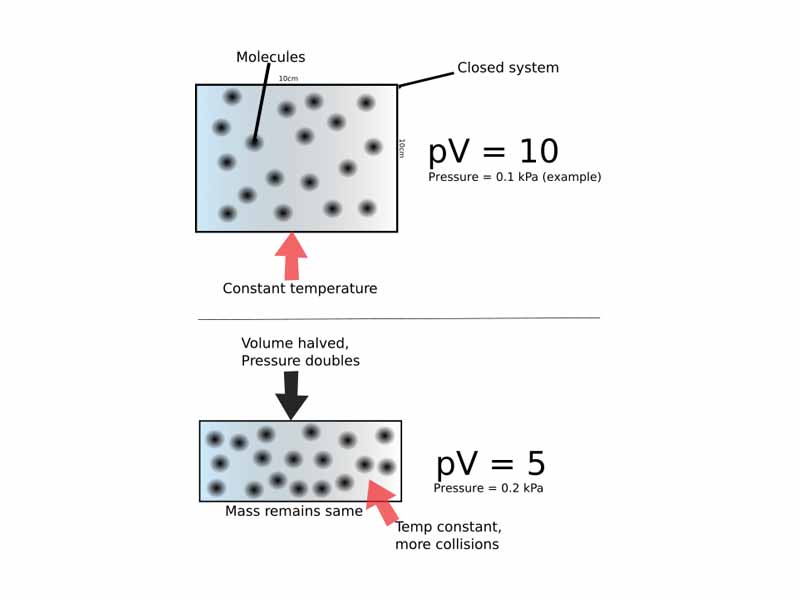Interdisciplinary Note (4 of 12)
Boyle's Law and Gay-Lussac's Law are much more accessible if you think about them in terms of fundamental mechanical principles in play at the molecular level. For example, Boyle's Law describes how the pressure changes with the volume of an ideal gas at constant temperature. At its heart, Boyle's Law is telling you how pressure increases with an increase in gas density. Imagine the gas at the point of view of the particles. At greater density, even though the particles are not moving more vigorously (the temperature is constant), there are more particles colliding on a given area. At constant temperature, the pressure goes up as the volume goes down in inverse proportionality.
Gay-Lussac's Law, on the other hand, describes how pressure increases with temperature in a constant volume. Even though the particle density is the same (the volume is the same), because the particles are moving with greater average kinetic energy at higher temperature, the collisions, which give rise to pressure, must be more vigorous. At constant volume, the pressure is directly proportional to temperature.
